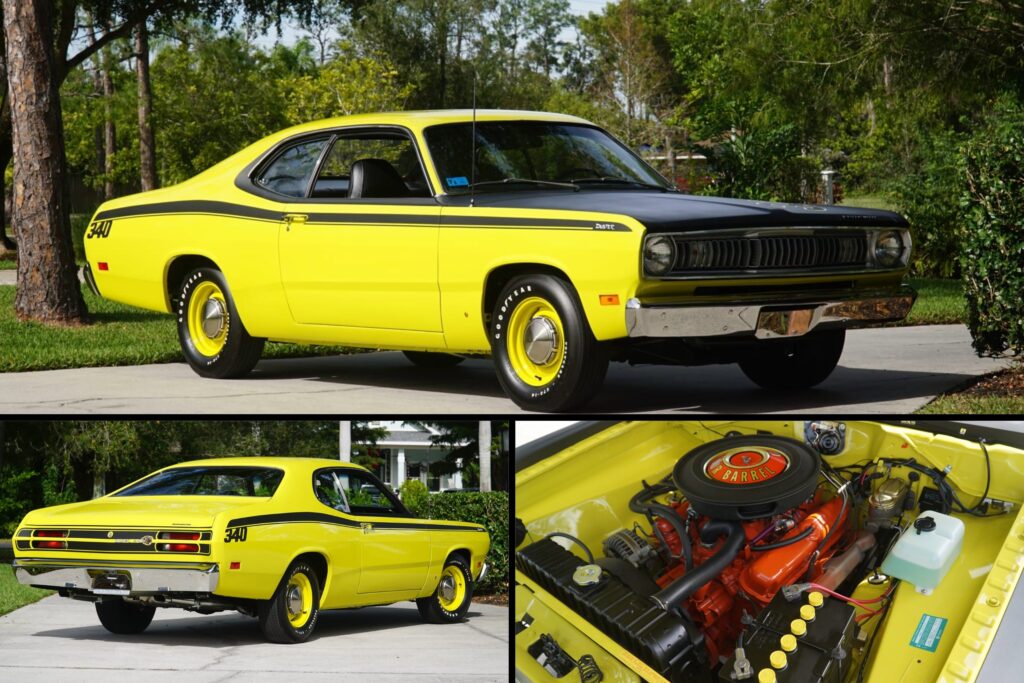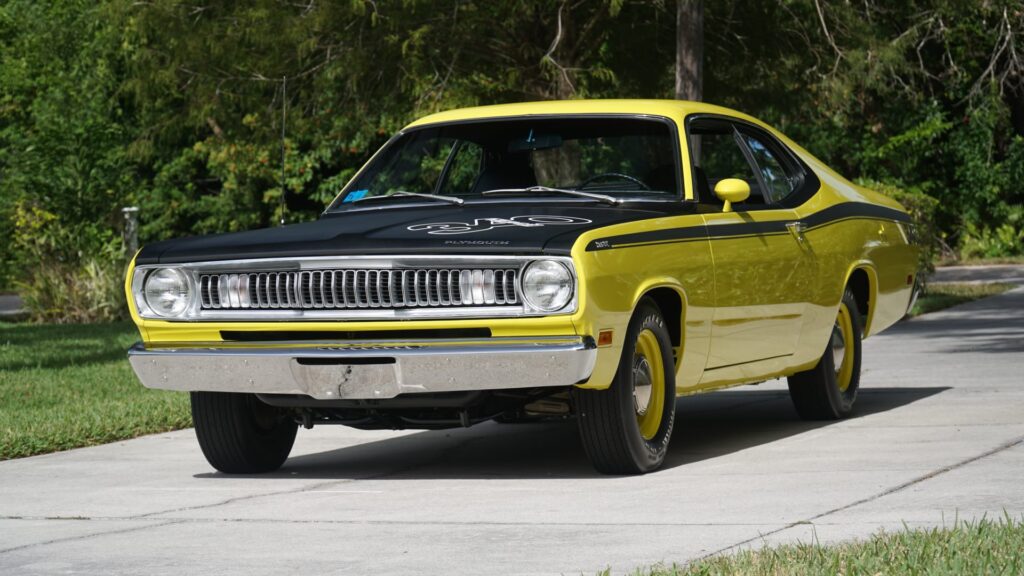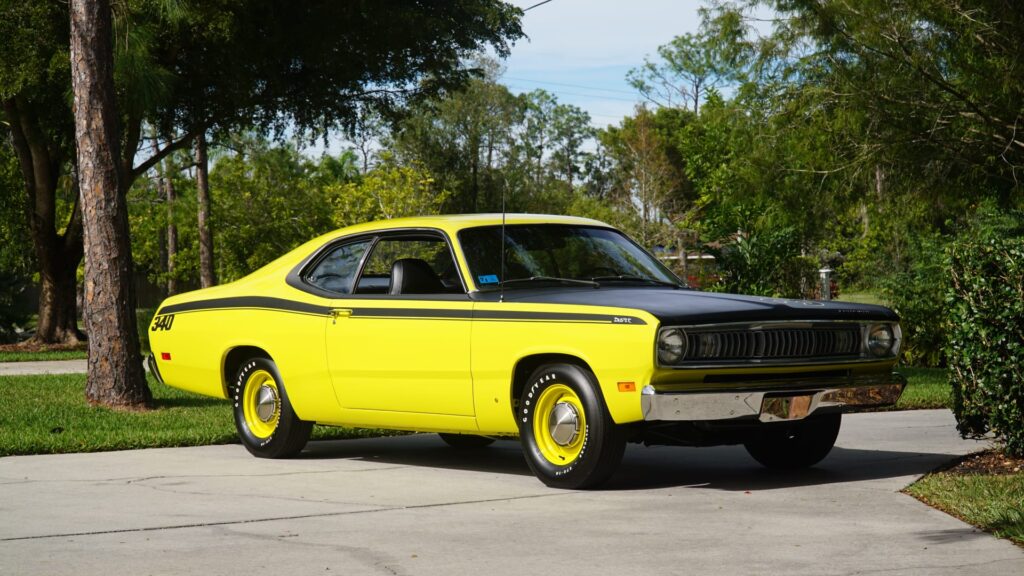The 1971 Plymouth Duster 340 was a standout in the muscle car era, combining compact size, aggressive styling, and potent performance at an affordable price. Built on the Plymouth Valiant platform, the Duster was a two-door semi-fastback coupe designed to attract younger buyers seeking a sporty yet budget-friendly vehicle. Introduced in 1970, the Duster 340 carried over into 1971 with minimal changes, solidifying its reputation as a “giant killer” due to its lightweight body and powerful engine.

Design and Features
The 1971 Duster 340 featured a distinctive semi-fastback roofline and a sporty aesthetic that set it apart from the more utilitarian Valiant. For 1971, Plymouth dropped the “Valiant” badge from the fenders and grille, emphasizing the Duster as a standalone model. A new “shark-tooth” grille was introduced, adding to its aggressive look, and the Duster Twister trim package debuted, offering the 340’s styling cues (like side stripes, matte-black hood, and shark-tooth grille) on models with less powerful engines like the Slant Six or 318 V8.
The Duster 340 came equipped with performance-oriented features, including:Heavy-duty suspension with a front stabilizer bar and six-leaf rear springs.
Standard front disc brakes, a rarity for compact cars of the era.
Rallye wheels with E70x14 tires.
Optional bucket seats, a center console with a floor shifter, and a tachometer for a sportier interior.

Optional appearance packages included a nonfunctional dual hood scoop, rear spoiler, and the bold “340 Wedge” logo on the blacked-out hood. High-Impact paint colors like Curious Yellow and Tor-Red (Hemi Orange) were available, with some examples, like a numbers-matching Curious Yellow 1971 Duster 340, fetching record prices at auction, such as $159,500 in 2024.
Performance
At the heart of the Duster 340 was its 340-cubic-inch (5.6-liter) LA-series V8 engine, equipped with a Carter four-barrel carburetor, producing a factory-rated 275 horsepower and 340 lb-ft of torque. This small-block V8, paired with the Duster’s lightweight body (around 3,100 pounds), delivered impressive performance, with quarter-mile times in the mid-14-second range at nearly 100 mph. Some enthusiasts modified the 340 with 6-BBL (Six-Barrel) carburetion, reminiscent of Mopar’s high-performance Six-Pack setups, for even greater power.
Transmission options included:
A standard three-speed manual.
An optional four-speed manual with a Hurst shifter or a TorqueFlite three-speed automatic.
Standard 3.23:1 rear axle, with optional 3.55:1 or 3.91:1 gears and a Sure-Grip limited-slip differential for enhanced traction.
A notable upgrade for 1971 was the optional electronic “breakerless” ignition for the 340 V8, introduced late in the model year, improving reliability and performance.

Production and Market Impact
Plymouth produced 186,478 Dusters in 1971, with 12,886 equipped with the 340 V8, making it a relatively rare variant. The Duster 340’s base price was around $2,700, offering muscle car performance at a fraction of the cost of larger models like the Plymouth Road Runner or Barracuda. Its affordability and performance made it a hit, though it competed for attention with flashier Mopars like the 1970 Barracuda and Road Runner Superbird.
The Duster 340 faced competition from compact rivals like the Ford Maverick and AMC Hornet but stood out for its superior power-to-weight ratio. Its Dodge counterpart, the Demon 340, shared the same platform and engine, though the Demon name was later changed to Dart Sport in 1973 due to religious objections.
Legacy and Collectibility
The 1971 Duster 340 remains a favorite among Mopar enthusiasts for its balance of performance, style, and affordability. While not as rare as some other muscle cars, well-preserved or restored examples, especially with desirable options like four-speed manuals or High-Impact colors, command strong prices. For instance, a 1971 Duster 340 in Curious Yellow sold for $145,000 in January 2024, reflecting growing appreciation for these compact muscle cars.


